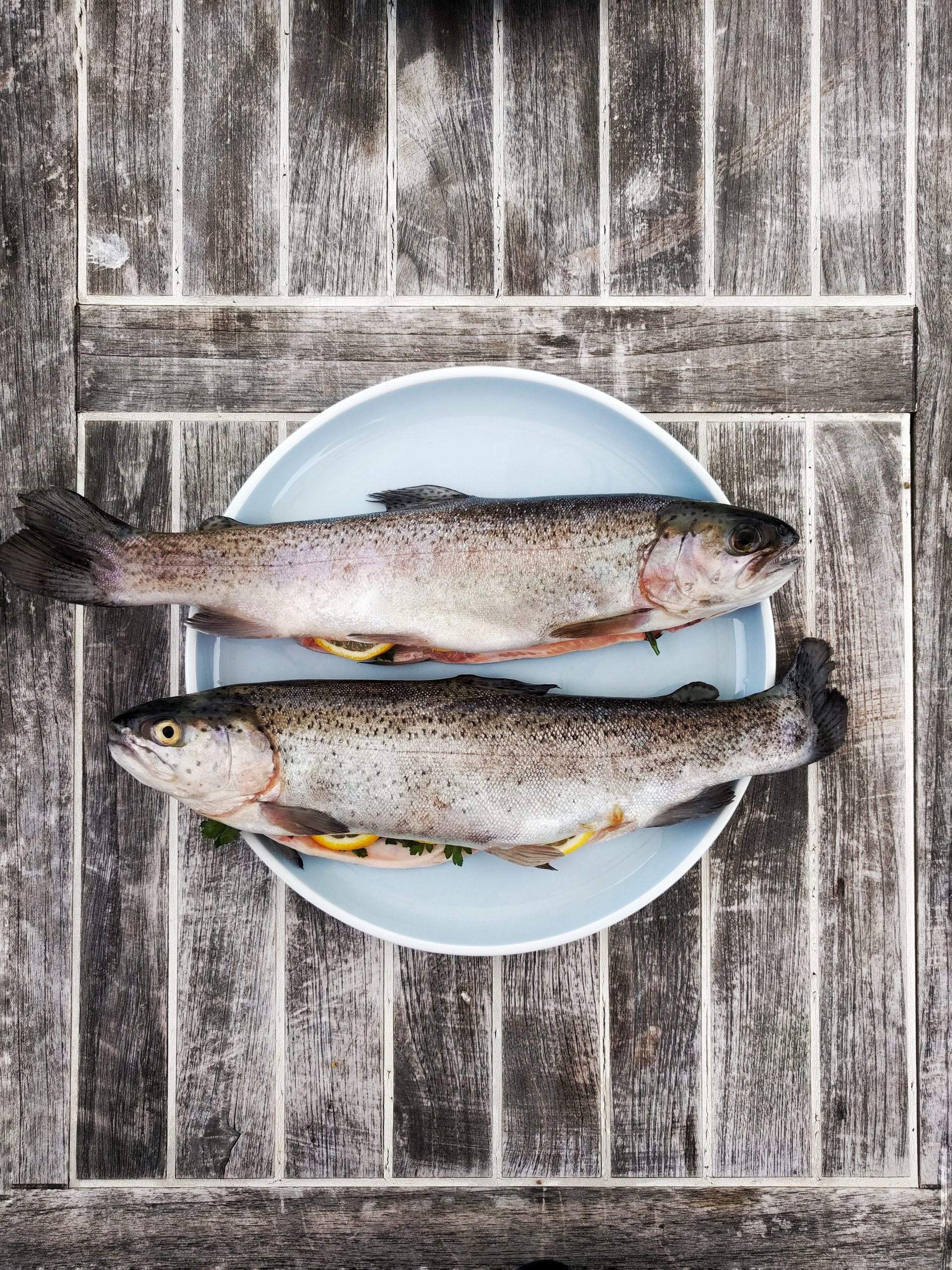
Anyone can catch some fish, and once you’ve got the catching part down, it is important to know that cooking that catch the right way can make it a great meal.
BASIC WAYS FOR COOKING THAT CATCH
Step 1: Draining the fish.
The first step in cooking that catch is to eliminate any suffering for the fish and prevent spoilage of the meat. The fish must be bonked and drained as soon as possible after removing the hook. To drain the fish after rendering it unconscious, use a sharp knife to cut into both the gills from the bottom up. Dip the fish back into the water headfirst and massage along the spine to help the blood flow out of their body. Once the blood flow slows, put the fish in a cooler to chill.
Step 2: Remove scales or skin.
Fish with thin skin and smooth scales, like trout, can have their skin and scales left intact. Those with thick skin and no scales, like catfish, often need their skin removed completely to make them fit for eating. Fish with tough scales, like salmon, are best when descaled. Descaling is easiest to complete before cutting open the fish.
Run the back of a fillet knife along the scales, working from the tail to the head.
Put the fish in a bag, if possible, to keep the scales from flying about the area.
Skinning, on the other hand, should be left until the end, usually after the fillets are cut.
At that point, the skin can be removed by carefully running a fillet knife between the skin and meat.
Step 3: Removing the innards.
To do this, follow these steps:
- Hold the fish firmly against the cutting board and run the knife through the belly from the anus to the neck.
- Do not cut too deep, however, as that could puncture the internal organs and make a mess.
- Then, reach inside and grab the innards with two fingers, starting at the neck.
- Pull down and out, removing all of the innards and discard them in the trash.
- Rinse out the fish’s belly cavity thoroughly and run the rest of it under the water as well.
Step 4: Preparation for cooking that catch
Now, it is time to prepare it for cooking. The way it is prepared depends on the intended cooking process. You can also simply leave the fish whole, though the fins will need to be removed to prevent incident. Simply cut away all the fins with a pair of scissors or knife to keep the sharp bones from causing a problem. Once the fish is ready to cook, it can be placed in the fridge or freezer for later. A cooler can also keep fish fresh for a few days as long as it seals well and has the ice replenished regularly.
Step 5: Cooking that catch
Finally, you are going to be cooking that catch. Whether you made steaks, fillets, or left the fish whole will determine how to best cook the fish. Cooking can take place anywhere. The cooking equipment on hand will influence your methods. You can cook in a frying pan, on a grill or in an oven. Fish can be cooked over a campfire, yielding a delicious, smoky flavor. When cooking fillets, drizzle the entire fish with oil, then add the spices. Cook in a frying pan, oven, or grill over medium heat until hot and flaky—and the skin is brown and crispy, if left on. Cook fish steaks similarly using oil to keep the meat from sticking to the pan or grill. Always wait until the fish starts to brown on one side before turning or it will try to stick and tear apart. https://www.delish.com/cooking/g2175/how-to-grill-fish-on-a-gas-grill/